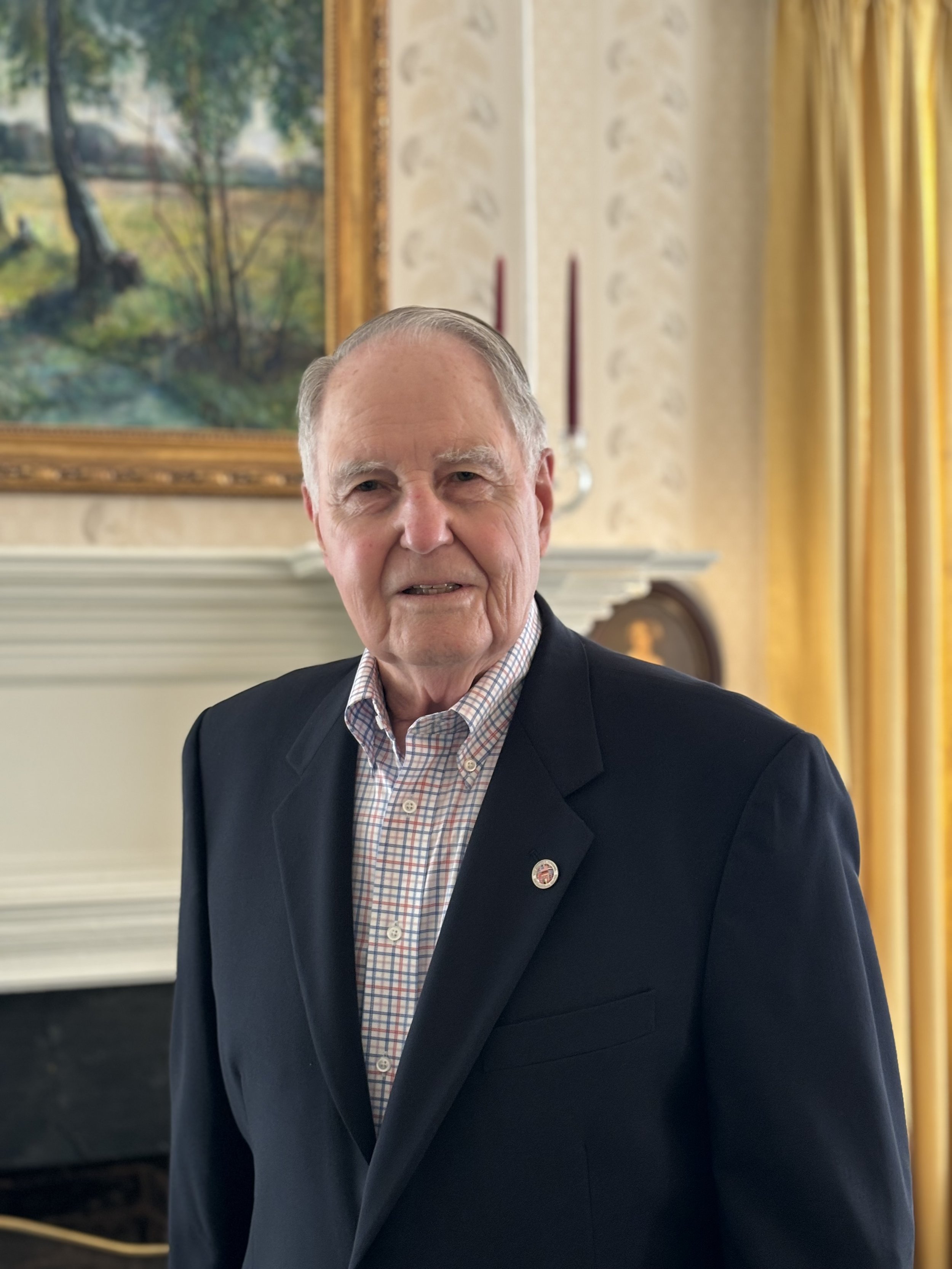Volunteer Profile: Bill Brooks
Bill Brooks
Mr. Bill Brooks is the leader of the all-volunteer docent cadre at Dodona Manor. He has volunteered as part of the docent team since 2009, working tirelessly to share the lessons of General Marshall with guests for 15 years.
Biography
I grew up on a farm in Western Kentucky (near Paducah). I graduated from Murray State University (B.S., Physics and Mathematics) and completed a semester of graduate school before entering the U.S. Army in January 1963 to fulfill my two-year, active-duty ROTC obligation. During the next two years, my plans changed greatly. I married my wife Sheila and was soon embarked on a thirty-year Army career as a Field Artillery Officer.
My world view expanded through tours of duty in South Korea, Vietnam, the Federal Republic of Germany and many state-side locations. Following my Army career, I worked for Science Applications International Corporation (SAIC) for the next 25 years where I led and conducted studies and analyses of national security-related issues.
How did you get interested in George Marshall and Dodona Manor?
As an Army officer, I studied many past leaders and George C. Marshall stood at the top of my list. For my last three years of Army service, my office was located on the Pentagon’s Marshall Corridor. There I came to admire Marshall even more as I observed the constant pressures placed on the Chief of Staff, Army, during wartime (Panama, First Gulf War) and during times of peace. I better appreciated the magnitude of Marshall’s accomplishments as Chief of Staff, Army, from 1939-1945.
After reassignment to Headquarters, Department of the Army, in 1987, I met Dr. Forrest C. Pogue and his wife Christine at a Murray State Alumni gathering in Washington. For the next four years, when the Alumni gathered every few months, Dr. Pogue and I could usually be found in a corner discussing military topics. His eyesight was poor, but his intellect and memory were still keen. On an occasion in 1991, Dr. Pogue presented me a copy of George C. Marshall, Interviews and Reminiscences for Forrest C. Pogue. My admiration of Marshall only grew.
One evening in 2009, my wife and I attended a lecture by Rachel Thompson at Oatlands where she described the relationship and correspondence between Marshall and his stepson, Allen Brown, and Allen’s widow, Madge. I was hooked. After the lecture, I gave Rachel my business card and indicated my desire to explore becoming a docent at Dodona Manor. During the winter of 2009, I took Pat Black’s docent training course and commenced leading tours in the spring of 2010.
What is your favorite part of being a volunteer?
Working in tandem with other docents to inform people about the professional and personal life of one of America’s greatest soldiers and statesman, and then gauging from their comments or other actions that you have effectively conveyed the Marshall story, is especially gratifying.
Tour guests’ comments are usually positive and appreciative as they begin to understand how Marshall’s actions during his lifetime have impacted and been relevant to their own lives and those of family members. Their respect and admiration is most evident as they begin to understand Marshall’s character and the principles and practices he lived by, and they frequently express their wish that more such leaders were present in our country today.
It is then a special pleasure to explain to guests how the Marshall Center, through its Ethical Leadership Conferences and middle school programs is helping to create such future leaders using Marshall as a role model.

